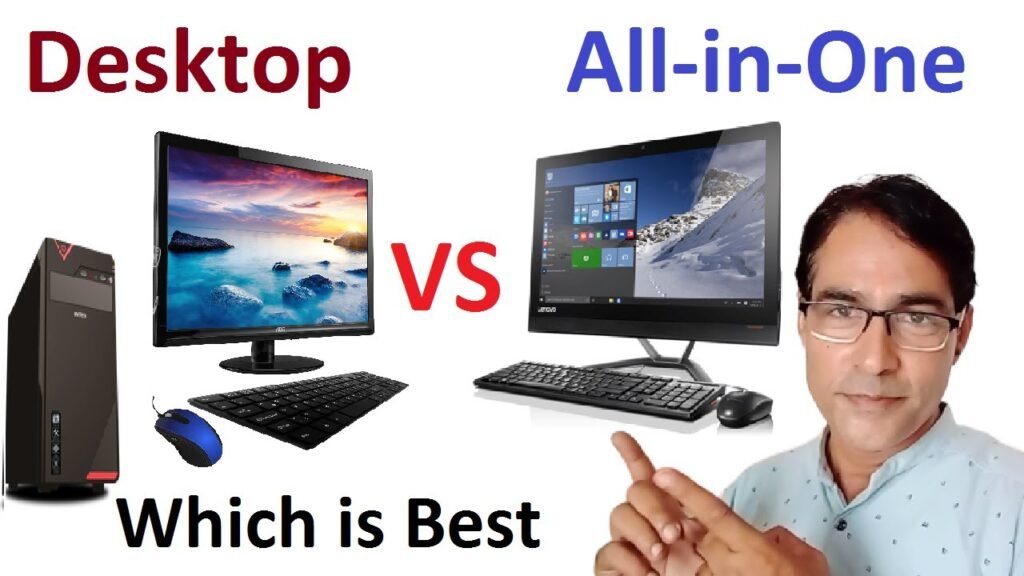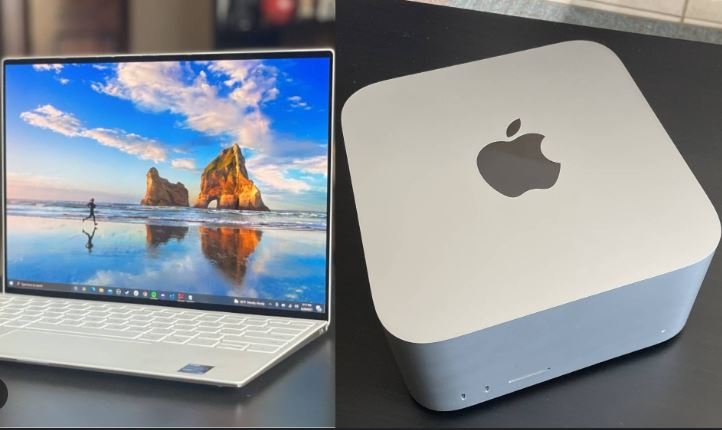When choosing a desktop computer, you’ll encounter two main types: all-in-one desktops and traditional PCs. Each has its own advantages and disadvantages, making it essential to consider your specific needs and preferences. Here’s a comparison to help you decide which is better for you.

All-in-One Desktops
All-in-one (AIO) desktops integrate the computer’s hardware into the monitor, offering a sleek and compact design. Here are the key features:
- Space Efficiency: AIO desktops are ideal for those with limited desk space. Their compact design eliminates the need for a separate tower, reducing clutter.
- Sleek Design: With everything built into a single unit, AIO desktops often have a modern and stylish appearance. They are designed to fit seamlessly into home or office environments.
- Easy Setup: Setting up an AIO desktop is straightforward. There are fewer cables and connections to manage, making it easier to get started quickly.
- Integrated Components: Many AIO desktops feature built-in webcams, microphones, and speakers. This integration simplifies video conferencing and multimedia usage.
- Limited Upgrade Options: One downside of AIO desktops is their limited upgradeability. Most components, including the CPU and GPU, are integrated into the monitor. Upgrading often requires replacing the entire unit.
Traditional PCs
Traditional PCs consist of separate components: a monitor, a tower (housing the CPU, GPU, and other components), and peripherals. Here are the key features:
- Flexibility and Customization: Traditional PCs offer more flexibility in terms of upgrades and customization. You can easily swap out components like the GPU, CPU, or storage to enhance performance or adapt to new needs.
- Performance Options: Traditional PCs can be configured with higher-end components compared to most AIO desktops. This makes them suitable for demanding tasks such as gaming or professional applications.
- Cooling and Expansion: With separate components, traditional PCs often have better cooling options and more room for expansion. You can add additional storage, upgrade RAM, or install new peripherals as needed.
- Varied Designs: Traditional PCs come in various shapes and sizes, from compact mini-towers to full-sized cases. This variety allows you to choose a design that fits your space and style preferences.
Comparing Performance
In terms of performance, traditional PCs generally have the edge over AIO desktops. The ability to use high-end, separate components means traditional PCs can offer better processing power and graphics capabilities. However, high-end AIO desktops are available and can match or even exceed the performance of mid-range traditional PCs.
Considering Your Needs
When deciding between an AIO desktop and a traditional PC, consider the following factors:
- Space: If desk space is at a premium, an AIO desktop might be more suitable due to its compact design.
- Performance: For tasks requiring high performance, such as gaming or professional work, a traditional PC with customizable components might be the better choice.
- Upgradeability: If you plan to upgrade your system frequently, a traditional PC offers greater flexibility and ease of component replacement.
- Aesthetics: If a clean, modern look is important, an AIO desktop offers a sleek, integrated design that can enhance your workspace’s appearance.
Conclusion
Choosing between an all-in-one desktop and a traditional PC depends on your specific needs and preferences. All-in-one desktops offer space-saving design and ease of use, making them ideal for casual users or those with limited desk space. Traditional PCs provide greater performance potential, customization options, and expandability, making them better suited for power users and those who prioritize upgradeability. Evaluate your requirements and preferences to determine which option best fits your lifestyle.











